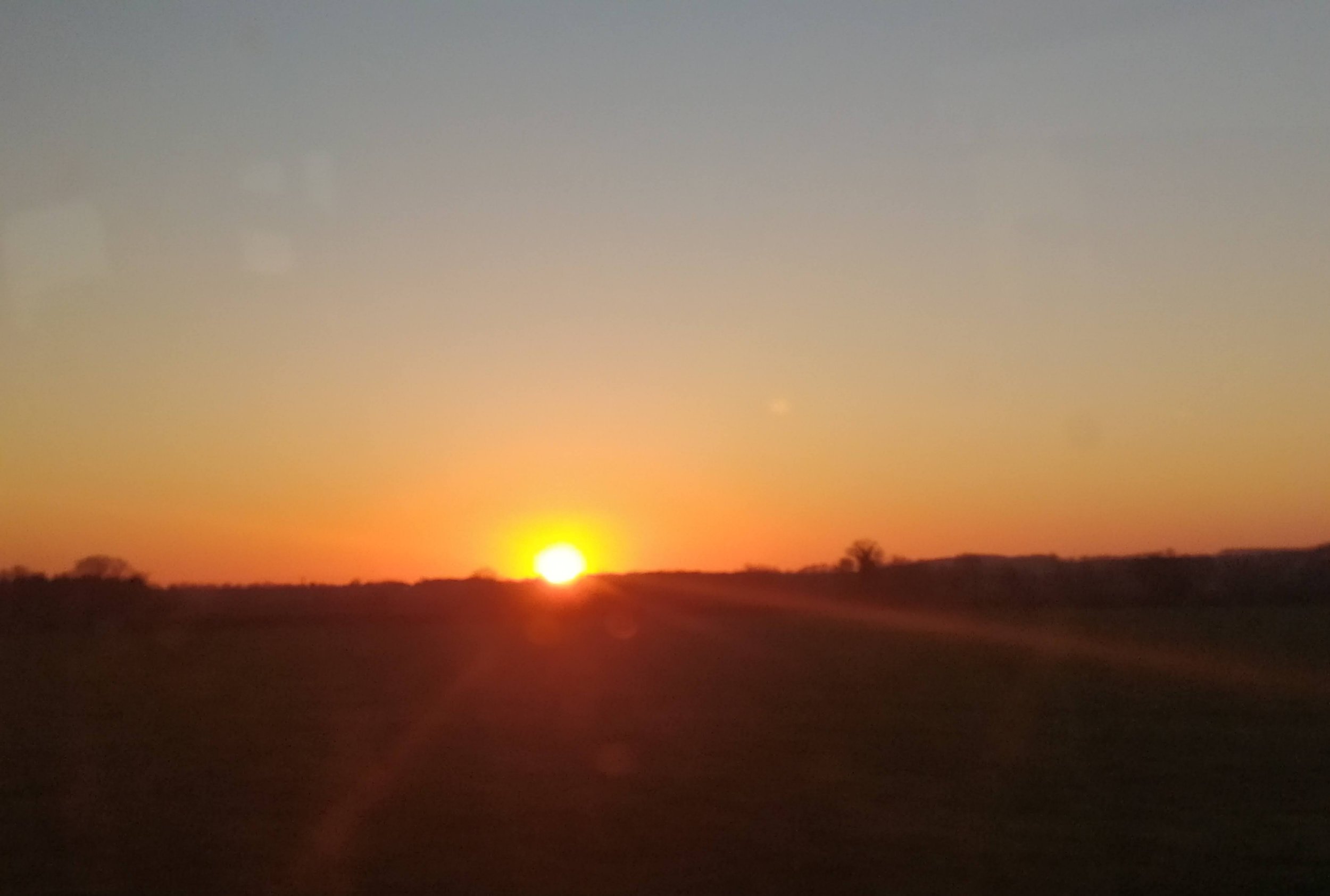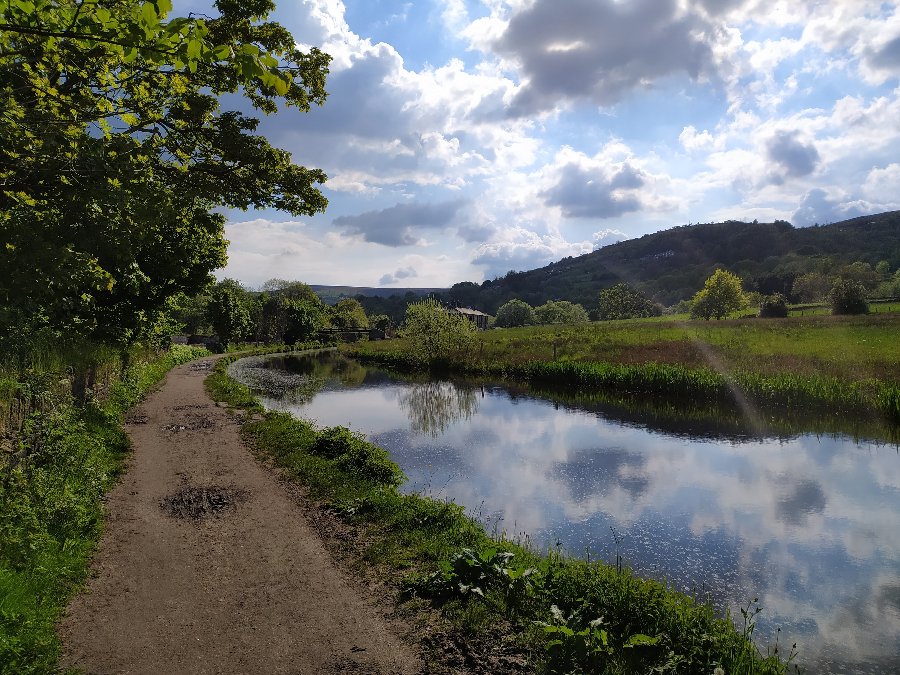Out of Place is an irregular series about movement and place, and the novels that take us elsewhere, by regular contributor Anna Evans.
It is better to have nothing': Transience in Housekeeping by Marilynne Robinson
It had never occurred to me that words, too, must be salvaged, though when I thought about it, it seemed obvious. It was absurd to think that things were held in place, are held in place, by a web of words.
Housekeeping, the first novel by Marilynne Robinson, published in 1980, is a book that is strongly resonant of place. It is a book with themes of transience and ideas about the meaning of home, even if that home is found elsewhere. Rooted in nature, it is also deeply human. It is a striking and singular book, full of beautiful imagery, written with a philosophical lyricism. When I first read it, I felt that it existed on its own plane, somehow.
In the book, Sylvie, described as a transient and drifter, returns to her childhood town to look after her orphaned nieces. It is partly a coming-of-age story, about separation, memory, and loss. It begins with a train derailment, and the haunting image of a train disappearing into the lake. The train lies lost and submerged, hidden in its depths, becoming a legend in the town of Fingerbone, a story which also foreshadows the lives of its characters.
Housekeeping was highly acclaimed on publication, to the surprise of its author. In an interview with Thomas Schaub, Robinson remarks that when writing the book, she felt its style went against the tide of contemporary literature, and of what might be considered publishable: ‘part of what I was doing was trying to write a book that I would want to read, just to see what one would look like.’
It is a book that has language at its centre, and that uses language and metaphor to take us elsewhere. In the Schaub interview, Robinson talks about her interest in the idea that lived experience is something that transcends spoken, everyday language, and that people are more than what they say. In the book, Robinson uses metaphor to explore ideas through the thoughts of her narrator, Ruthie. She says that what interested her in writing was ‘in trying to be beyond my own grasp or outside my own expectations.’
The idea behind this series is partly to consider what it is about literature that seems particularly displacing, and what novels can tell us about being in the world. As Robinson puts it: ‘Art in a sense is recurring at the frontier of understanding because it integrates the problems of experience and the ordering of experience.’
In the book, dreams appear as real as memories, and the line between them is blurred: ‘I have never distinguished readily between thinking and dreaming. I know my life would be much different if I could ever say, This I have learned from my senses, while that I have merely imagined.’
The fictional town of Fingerbone is based on Sandpoint in northern Idaho, which is situated on a vast lake, Lake Pend Oreille, between three mountain ranges and surrounded by National Forests. A long railroad bridge crosses the lake, as in the book, ‘from any distance its length and the vastness of the lake made it seem fragile and attenuated.’ The Northern Pacific Railroad built a depot at Sandpoint in 1882 opening a trade route for timber and freight trains, and the railroads played an important role in the arrival of settlers into this remote part of North Idaho. Amtrak’s long distance Empire Builder train route, which travels between Chicago and Portland or Seattle, stops at Sandpoint.
Landscape plays a central role in the story, and is based on the place Robinson grew up, a part of the country where her family had lived for a long time. She describes the early parts of the book as ‘either memories from my childhood in some oblique form or stories from my family.’ Robinson’s all-female cast of characters are significant. When writing the book, she was aware of an imaginative lack and misrepresentations in stories and accounts of the American west, including the absence of women from these portrayals.
Throughout, the book enacts a tension between transience and settlement, and between movement and stasis. Sylvie likes to watch the passing trains, and all the stories she tells are about boxcars and train or bus stations. She retains her transient habits, preferring food that can be eaten on the move, and the only place she will shop is the five and dime store. She keeps her clothes in a cardboard box under the bed, and sleeps on top of the covers, fully clothed and with her shoes on. The book plays with the figure of the hobo, and with depictions of female drifters and migrant workers. For Sylvie, the trains represent a home that is always on the move, and through which pass the lives of many people, the invisible transient souls who claim a space within its wagons.
Sylvie’s drifting seems to arise partly as a response to Fingerbone’s isolation and instability. It is dominated by the lake that surrounds and threatens to overwhelm the physical spaces of the town. In Fingerbone, even the wind is watery. Each year the lake freezes over, and then thaws dramatically. Its houses seem like insecure and fragile dwellings, and there is recurring imagery of fallen houses, lost to the weight of snow and ice, and of houses adrift or unmoored: ‘a good foundation was worse than useless. A house should have a compass and a keel.’
Water imagery and metaphors of flooding and drifting recur throughout its pages. This connects to the idea of transience: ‘our lives floated as weightless, intangible, immiscible, and inseparable as reflections in water.’ The word ‘transient’ comes from the Latin transiens which means ‘to cross’, and this crossing of boundaries, the seeping and infiltration of water, is everywhere in the book. The lake is a constant presence reaching deep into their imaginations, infringing the boundaries between land and water.
Robinson writes: ‘Below is always the accumulated past, which vanishes but does not vanish, which perishes and remains.’ We are used to hearing about the movement of people as streams, flows, and floods. In the book, the lake becomes a container for the lost: ‘all those who were never found and never missed, who were uncommemorated’.
Fingerbone is described as insignificant and negligible, melting into the darkness, as if glimpsed from the window of a moving train. The town’s residents feel unsettled by the presence of the transients who arrive with the railroad, or from the mountains, who are found by the shores of the lake, and in the forests. They are described as ghosts, wandering through Fingerbone, ‘like people in old photographs’, ‘the nameless’ and ‘the dispossessed’. Their presence threatens the stability of the town, its claim to be a tenable and rooted place, and implies a recognition, of something too close for comfort. Robinson writes that, ‘a diaspora threatened always,’ and the book creates a space for the displaced and unknown who haunt its edges.
Throughout the book, there is a tension between domestic life and drifting. Sylvie struggles with the feeling of being contained within a house, and her housekeeping begins to overlap the boundaries between inside and outside: ‘Sylvie in a house was more or less like a mermaid in a ship’s cabin. She preferred it sunk in the very element it was meant to exclude.’ She opens the windows and turns out the lights, and every evening they have dinner in darkness, with the sounds of the night outside. Leaves begin to gather in the corners of the room. Crickets and squirrels begin to reside in the house, sparrows and swallows begin to nest in the attic.
The book traces the narrator Ruthie’s thought process as she tries to come to terms with what makes her feel different from others. She describes feeling invisible, like a ghost: ‘It seemed to me that I made no impact on the world, and that in exchange I was privileged to watch it unawares.’ She experiences the absence of her mother, her sense of loss, as a constant waiting and expectation, so that ‘the ordinary demanded unblinking attention.’ The book’s characters feel an intense quiet awareness and stillness: When we did not move or speak, there was no proof we were there at all.’
Ruthie begins to find a greater awareness of fragility, of instability and impermanence. To stay still in the book, is to be caught up in the ordered time of the domestic. It can be a way to hold the past at a distance and keep out the ghosts of those who are absent or lost. For Ruthie and Sylvie, these fragments of memory threaten to overwhelm the present, and a life of drifting become a way of comprehending the ghosts of the past, of keeping them alive through movement.
Becoming transient is to reach an awareness of the unsheltered, the nameless, the lonely; those who drift outside the lighted windows of the houses. Ruthie begins to feel that she is ‘breaking the tethers of need, one by one’, moving further from the comforts of the settled world, in which the sense of security, of permanence is an illusion: ‘It is better to have nothing, for at last even our bones will fall. It is better to have nothing.’
In Housekeeping, the idea recurs that families should not be broken: ‘That’s how it is with family, Sylvie said. You feel them the most when they’re gone.’ As I write this, I have been thinking about the separation of families in a more recent context, about migration and detention; about children caught up in war and conflict. Long journeys across impossible spaces; the events that cause people to become separated, to become lost.
I’ve been thinking about the Sylvie who exists in me, my own restlessness and tendency to drift. And about the problems with a romanticized impression of life on the road or rails. But the invocation of this book, that families cannot be broken, brings back the idea of displacement. The book makes its transients central, rather than leaving them on the edges of things.
Housekeeping portrays a longing for movement that is also a deep awareness, that registers the presence of those who have vanished; the unrecorded lives of those who left few traces behind. Perhaps a troubled line runs between these kinds of longing, and the small gratitude of having safety and security, somewhere to hide away, when needed, and to sleep in peace.
Housekeeping depicts a different way of living in the world and evokes a belonging that can exist outside ideas of home as being rooted in one place. The book questions the notion of a stable past, a version of home that is not available to everyone. It is about the insecurity at the heart of living, of finding meaning and a place to be, within movement.
***
Anna Evans is a writer from Huddersfield who lives in Cambridge, with interests in place, memory, literature, migration, and travel. She enjoys writing about landscape – nature, cities, and all the places in-between. You can read more about Anna and her work on her website The Street Walks In. You can find more of Anna’s contributions to Elsewhere here.







